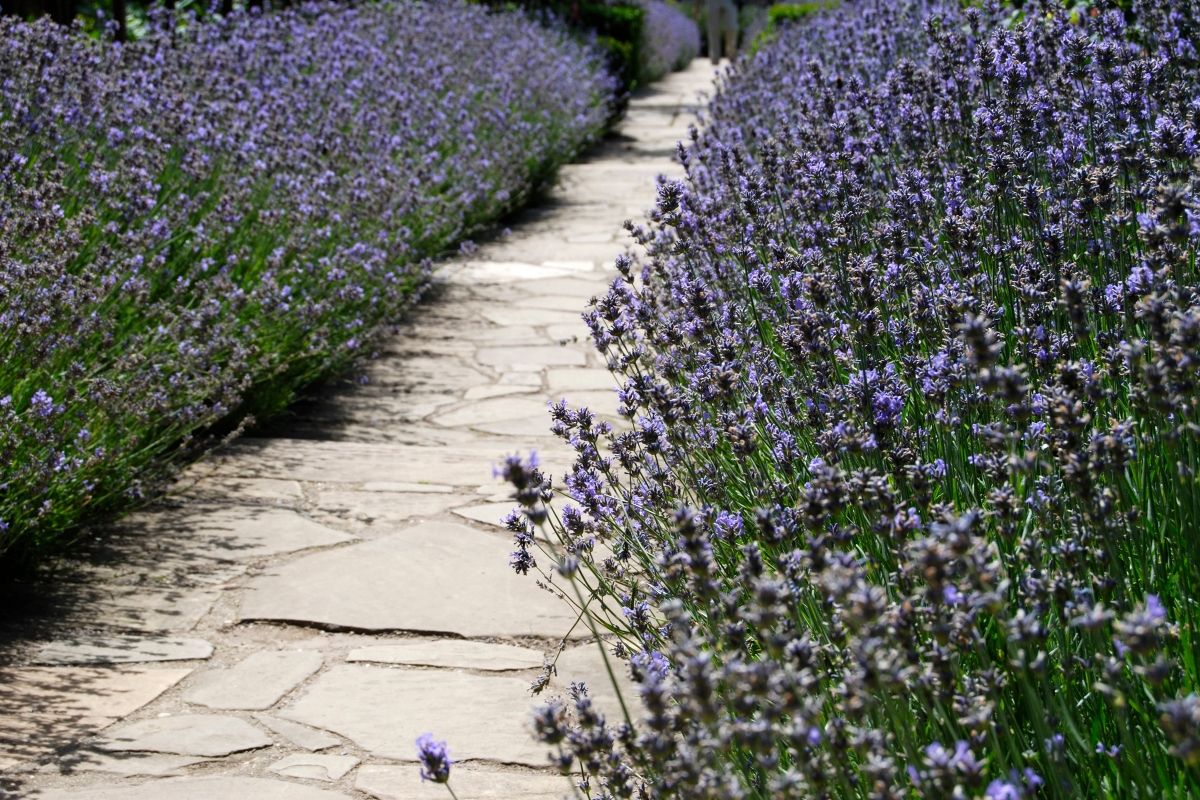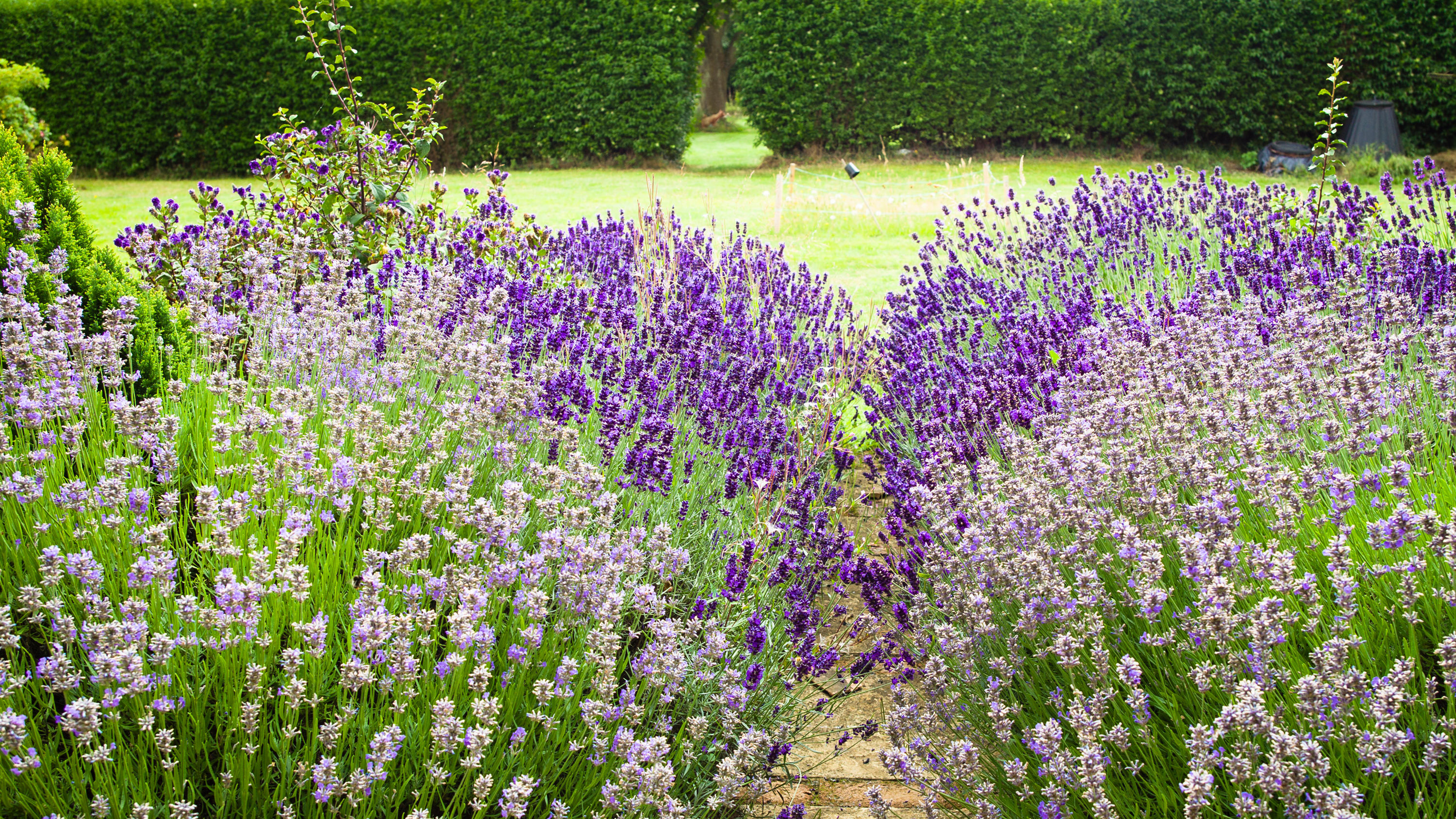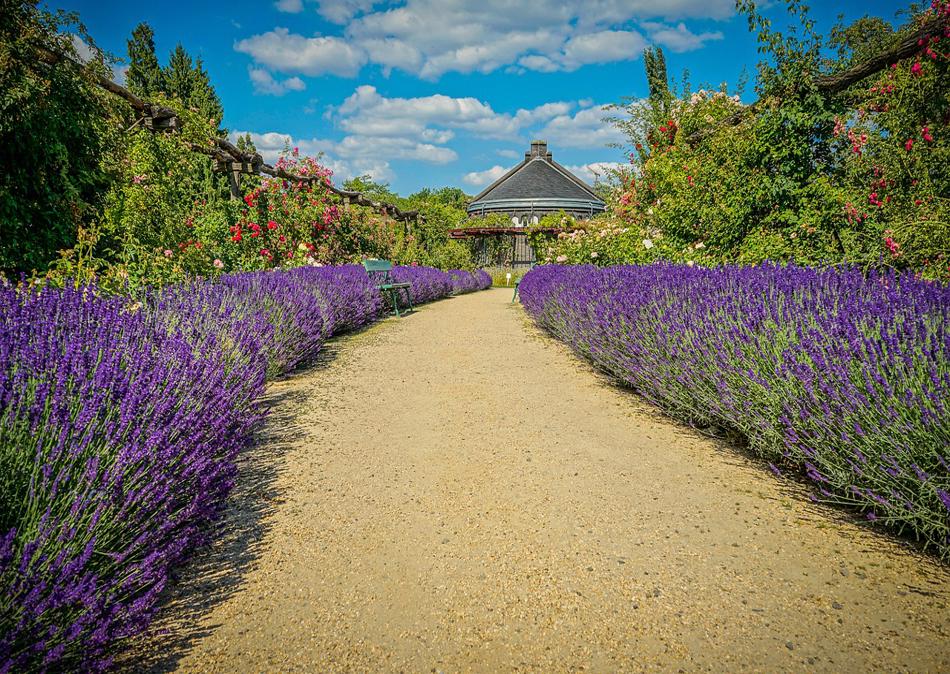
| Purple Size | Spacing of Lavender Hedges |
| wide lavender variations, full size width of 30-36 inches (75 to 90 cm) Vera, Grosso, etc. | Lavender should be planted 2-3 feet apart. |
| Medium lavender types, such as “Munstead,” “Hidcote,” and “Royal Splendour,” have a full size width of up to 24 inches (65 cm). | 18 in. to 2 ft. apart |
| Smaller lavender types, like “Hidcote Superior,” have a full-size width of up to 20 inches (50 cm). | 15 to 18 inches aside |
Simply determine the size of your lavender variety at maturity to determine the lavender hedge spacing, and then plant each lavender at a distance that is little less than half its spread at full growth.
In order to create a hedge without any gaps, for instance, you would need to space each lavender between 18 inches and 2 feet apart. Lavender Hidcote is a fantastic option for this and can grow up to 2 feet wide at full maturity (under the correct conditions).
As each plant needs the proper amount of room for its root systems to form and to be in full sun, planting lavenders too closely together would harm each plant’s ability to flower and produce aroma.
Additionally, lavender plants that are planted too closely together run the risk of contracting diseases because these plants prefer breezes to humid weather and prefer air movement through their foliage.
- Three to four bigger lavender plants, such as ‘Vera’ or ‘Grosso,’ are needed to make a 6 foot (182 cm) hedge.
- Four to five medium lavender plants, including “Munstead” and “Royal Splendour,” are needed to make a 6 ft (182 cm) hedge.
- Five to six tiny lavender plants, such as “Hidcote Superior,” are needed to make a 6 foot (182 cm) hedge.
It is important to note that these guidelines for spacing assume that the lavender plants are in full light and are given the right care so that they grow to the appropriate size.
Table of Contents
Spacing Lavender Hedges

When first laying out your planting plans, the temptation is frequently to place the lavenders (especially the smaller varieties) too close together because they may appear too little to form a hedge when purchased from the store or nursery.
The lavender hedge will form a continuous display without any gaps after about two years, but like many other gardening tasks, this one requires a little patience and the ability to postpone gratification.
Keep in mind that lavenders can only grow to their full size if they receive the proper care and upkeep.
Due to limited growth, lavenders that receive insufficient sunlight or those planted in unsuitable soil may not be able to grow long enough to form a continuous hedge. For information on the ideal soil mix, irrigation schedules, and other considerations, read my guide. how to take care of ‘Hidcote’ lavender.
For smaller decorative hedges, I personally like (Lavandula angustifolia) ‘Munstead’ and (Lavandula angustifolia) ‘Hidcote,’ while cultivars (Lavandula x intermedia) ‘Grosso’ and (Lavandula angustifolia) ‘Vera’ are excellent choices for bigger hedges.
All of these lavender plants are low maintenance, sweet-smelling, and cold tolerant.
French or Spanish lavenders, on the other hand, can also form excellent hedges, although they do need moderate winters because they can’t stand frost and freezing temperatures. To find out more about the best lavender plants for hedges, see my post.
Before you purchase or plant the lavenders, be sure to identify the type. I also advise inquiring at a nursery or garden center for the size of the plant at full maturity or doing a Google search to find out how far apart each lavender should be planted based on its size when it is completely grown (after 2 years).
There are literally hundreds of different lavender species that are grown and sold, but I would advise picking an English lavender species instead because it is cold hardy and won’t be damaged by frost, which could be a costly mistake if you plant the more delicate French and Spanish lavenders as a hedge in the wrong climate.
Best practice: When designing your hedge, take into account the size and purpose of the lavender hedge. Larger types make excellent wind barriers since they can withstand windy conditions and protect sensitive plants, whereas smaller plants can create a very lovely border that is especially stunning when in bloom.
Why Lavender hedges require up to 3 feet of Space

- The root system of the lavender has adequate room to develop itself in the soil if each plant is planted at the suitable spacing based on its full size at maturity. Along with physical room, lavender plants also need easy access to nutrients and water without being in competition with other root systems. For bigger lavender cultivars, a spacing of 2 feet or more ensures that every plant has access to the water and nutrients it needs to stay healthy.
- Lavenders are native to the Mediterranean coast of Europe, where they frequently experience a sea wind. Lavender hedges are therefore excellent windbreaks for smaller, more delicate plants, such as those in a vegetable garden. Reduced danger of fungi diseases is further aided by airflow in the plant’s foliage. Lavenders do not thrive in humid environments or places without airflow or breezes, thus it is crucial to plant them at the proper distance. The lavender will still create a continuous hedge when spaced properly, but it won’t be crammed too closely together, which could restrict ventilation and raise the danger of fungal disease.
- All types of lavender prefer full sun. A lavender plant produces more flowers and has a stronger perfume from the foliage the more sun it gets. The larger lavender plants should be spaced 2-3 feet apart to ensure that each lavender plant receives the necessary amount of sunlight without any plants shading one another.
- Lavender plants should be spaced appropriately apart to make a continuous hedge after two years with no noticeable gaps. The lavender hedge could appear sparse if the spacing is increased.
